Can Poor Posture Cause Lower Back Pain and keep you in the gutters for good?
It will if you let it and too often I see something that goes likes this:

Most of us would see this as an obvious question, and give an answer like this one:
Of course!…
Or is it?
Believe it or not, this is not a one way road, and there are quite in fact, more solutions than one to answer this question. What If I said there were two?
Would you believe me at this moment? There is more reason behind your back giving you problems.
There are just above 50% of people, 55% to be exact, who believe poor posture will lead to “a” lower back pain.
But what If I told you to spin your thinking a whole 360 degrees?
I know how hard your struggling because I’ve been in your shoes, and I don’t want to see you fall. I’d like for your posture and back pain to just vanish, disappear, and it most definitely could but It will take your effort.
You won’t be alone in this, In fact I know you’re going to have me on this journey but it’s going to be YOU who makes the transformation…
Let me tell you, there is no better feeling than knowing you have someone who’s going through what you are but even better that at the end of the day “You” made it happen.
OK, many people have this weird theory that rather than poor posture causing your lower back pain, should you think about it like so:
“should you rather work on your poor posture to get rid of lower back pain instead?”
Really?…
Poor posture = LBP?

Over 4 MILLION people are speaking and raving about this theory, and there’s no lack of surprise because there’s a secret behind that.
Without reasonable doubt I can’t argue the fact you need to fix your posture to retain less pain, but the “CAUSE”- the “CORE” root, might be otherwise.
In this article I will be talking to you about:
- What is the meaning behind posture?
- How does it happen
- Why does it occur?
- The 4 steps to correcting your posture
- 3 Steps to maintain it
- 3 Tips for long term better posture
…And in the process, I will point out to you the problems that come with poor posture, show you videos, and what I’m doing to make your life a lot easier.
Before I get started, I want to tell you two things:
- You can skip down to the very end where it reads “Tip #3” and start from there or view the best way to fix your posture with #1 recommendation here.
- The steps it takes to fix one’s posture will be different to another…
This video will help you understand the basics of posture and how from the next point forward, I’m going to show you how to increase your posture to your very own needs.
Nothing against the 8 steps to a pain-free back because it’s Truly Awesome, but like Jesse Cannone – a close associate of mine says: there is no one fix for everyone, and that’s due to:
- dehydration
- Different strengths
- Nutrition
- Power
- Spinal conditions
So, although on a ground-level most posture techniques can be done, it doesn’t always translate to being the most efficient. But If you’d like your free sample copy, go ahead and take a look at it, plus the extra resources you’ll continue getting…
A Lesson Learned Under Pressure
What comes to your mind when you hear the word pressure? Putting your best foot forward, and doing your best work right?
Keep the definition of pressure in mind:
“The continuous physical force exerted on or against an object by something in contact with it.”
When you lead with this, it can lead to a imbalance in your work, and a shift in your posture.
Take a look at the following example:
Ex: While at work, its the last day to finish and turn in your report. You’re at your desk working away, leaning into your desk and hunching in. Your sitting in contempt with that “I got this” feeling though.
Initially, you were on a roll, but times elapsed and now you’re pushing your “boundaries and limits”…
The sun sets, and now its is later that evening. While you’re outside in your garden, bending over, working away, then it appears;
you hunch forward, and you get the most pain you’ve had in awhile.
No problem to you right? So you keep on working. Is this the right approach? Find that out now.
Your poor posture is contributing to your lower back pain.
For those of you who already have a condition such as
- rheumatoid arthritis
- spinal stenosis
- spondyloisthesis
…It’s very important you stray away from doing anything repetitive that requires you to bend your upper back, because this can worsen the condition, and press more stress onto your disc.
Sure, you might not feel the ill affects the first moments, but over time you’ll feel the effects kicking in. Your body is yelling out at you in cry…
- my muscles hurt
- my joints
- sacroiliac joint
- my osteoarthritis
- my arthritis
- ouch, my spine
- my disc
- my hips
“Who and what” is working harder?
- you
- your joints and muscles.
…There comes a point when your muscles stay in a fixed position, from the constant hunching, and leaning to one side.
Now, for all of use who are having disc problems, we place added muscle and joint stress within the:
- hips
- glute muscles
- hip joints
Do you notice how your body leans forward? have you ever asked yourself why?
As your body leans forward, this stiffens your hips, and shortens your hip flexor muscles,and this causes tight hips. This is known as Anterior Pelvic Tilt.
A reason my story will benefit you…
I remember myself as a 110 pound teenager, in my 6th grade classroom. I liked to slouch over my desk, and lean hard to one side, specifically my left side. The only reason I did was so I could get a breather from sitting my bum on those hard sitting chairs.
Little did I know, my joints were taking on the stress from my muscles in my hips, glutes, and spine-within the facet joints.
Life was easier back then without spinal problems. Now add disc problems to the system of equation, and it taught me a valuable lesson…to be more careful!
My first half of this article, I focus on what you need not to do, and in the second half I’ll tell you exactly what to do, step-by-step. At anytime, if you feel like speeding forward, please do.
I’ve laid out a video for you that shows you the benefits of good posture and a couple of recommendations:
How You Shouldn’t Be Using Your Back
There is one characteristic that we all share. “The inability to maintain great posture 24/7”. It’s just not humanely possible. And here’s why…
Some of us have emotional factors, quite a bit of variables that get in the way, its called “LIFE”. Although that’s what it may be, there are more ways than one to cause less damage to your lumbar spine.
It’s apparent that our spines will shrink over time as well, the disc will start to flatten, and less fluid will get to our spines.
Here are common mistakes people make:
- slouching on a chair. I use to be great at this. I should have learned sooner. I’d look back at myself 10 years ago and say “why didn’t you just listen to your mom, yo know she was right”. But here is the thing, no matter what age does to our spine, we could recover our posture at all times.
Slouching doesn’t cause an immediate discomfort, but it does “overtime”. See your muscles work like this…
They are strong enough with all the fluids getting in between your vertebrae and into your spinal disc, which is fundamental in providing strong support. Sitting only to slouch overtime, your muscles get soft, and your tissues follow.
Take a close look at good vs bad posture
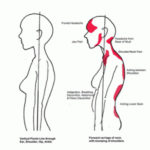
There is little to no muscle imbalance on the left picture, while on the right, the muscles are exhausted, and have to work harder to keep your posture together.
Tension = Pain
More tension leads a trail of pain not only focused to your lower back, but to your upper and middle back. When all your muscles do their part, and work as a whole unit, it:
- reduces the stress on your ligaments
- holds your spinal joints together
- minimizes likelihood of an injury
- allows muscles to work more efficiently
- allows your body to convert less energy
- prevents muscles fatigue
- Less muscle strains
- overuse disorders
- back and muscular pain
For Woman who are pregnant, you should avoid slouching as much as possible it can cause more pressure on the internal organs.
How to correct it:
First, your body my feel awkward adjusting to a different stance, because your muscles have not been conditioned, and they don’t know otherwise. Develop day to day habits to correct it.
Remember: Rome was not built in a day. Conform, and you will see the results.
Exercise properly. Do some of these workouts that have helped me:
- Planks
- Bridges
- Back Extensions
Below are a coupe videos showing you how to do this.
These plank exercises work great!
For Bridges I would follow this demonstration:
Leg Extensions will work best this way for any category of pain:
Standing and having your butt sticking out, or when there is a curve on your back, it will be Lordosis. If you have Lordosis, then this is what it might look like again:
Common mistakes come from:
- wearing your high heels
- too much weight in the stomach
- pregnancy results in lordosis
Correct it with this:
I think we underestimate the importance of the neck and head to our lower back pain. Allowing too much pain is caused in the cervical region(neck) it puts a strain on it. Once that happens, your head will stick out in front of your shoulders over and over again. This can cause your upper back to contort forward, and cause your lower back to eventually concave inward.
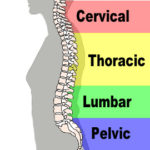
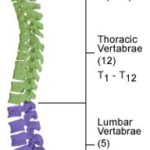
“Don’t Stand with a flat back”… There is a reasonable explanation for this.
You tuck in your pelvis this way. Muscle imbalances start to control your body more.
How to correct it:
Don’t lean on one leg…
This is the most comfortable position of all. Doing this will result in lower back pain, and hip pain, because all the pressure is to one side. You don’t use your muscles and buttocks to support you.
How to correct it:
Don’t Hunch Back and Text.

This is one I have been guilty of. It’s okay to raise your hand if you have to. Make mistakes to learn from theme right?
Sitting to lean in and hunch your back will give you a weak upper back, and a tight chest. Even worse, Leaning your head in will lead to poor posture.
How to correct it:
- Do chest stretches
- Lift your neck up, tuck in your chin

Related Post: Fixing Posture at work
Time Does Not Play Fair
What does time and pain have to do with each other? Simple, pain occurs overtime. Like mentioned up above, your movements are your everything, so use your moves wisely.
“Your movements dictate your posture.” Not the other way around.

Sitting to worry less about how you are going to twist, how you’re going to move your body one way vs the other, will also affect your posture. Standing up for at least 30 minutes a day can lead to a lifetime of lower back pain. How does that look for you?
Standing in a position takes more effort, than sitting down, and because of that it can lead to more pain in the future. But How? Standing in a position takes huge amounts of wear on your muscles, and spine, There is a common stance I think we all can relate with;
Avoid standing still, and move into different standing positions.
Experiment Through Trial And Error
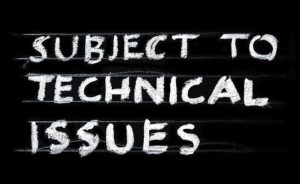
I want to lay out a demonstration for you, if you will. This is what I like to call, the “Placebo effect according to WebMD” – Control one group, and a change between the other. I spent a bit of time back when I was talking with a chiropractor who happened to be my friends dad.
He helped me look at my back in a whole new way. He drove the word pain out of my head, and made me change my thinking around.
He told me that there was a controlled case study he had to do, hence the placebo effect. In his research he needed to find a correlation between back pain and posture. Two groups were divided, one with back pain, the other without.
Medical equipment was the preferred choice. There were machines from X-rays to Radiography, and more means to understand and visually see the spinal alignment and the hip pelvic, and measurements of twist, and tilt, the degrees of curves, from the cervical spine(neck) down to the Lumbar Spine(lower back). The whole nine yards!
The chiropractor said that after studying the group without a back pain that him and his team had to conclude whether certain peoples postures will more likely have a back pain in the future. What I heard next was marveling.
There was no correlation! Poor posture does not exactly result in a lower back pain. His conclusions were these:
- There was no association with measurements of neck curvature with neck pain
- Teenager who suffered from postal asymmetry, Lumbar Lordosis, and Thoracic Kyphosis were more likely to develop a poor posture in their adulthood, then their peers with whom had better posture
- Pregnant woman with a much greater curve were no less likely to develop a lower back pain
- If you worked a job that moved you in awkward positions and posture, you are not more likely to develop a back pain at all
- And the all too important: Out of about 500 people with and without a back pain, there was hardly any difference in lumbar lordosis, leg length, length of abdominal, the hamstrings, and in ilioposas muscles.
This goes to show that there is no reasonable distinction between the two assessments.
Measurements CAN NOT justify the meaning. If a measurement can’t I’m pretty sold on that! Would you think the same too?
Here is a representation for the two conditions with the addition of scoliosis:
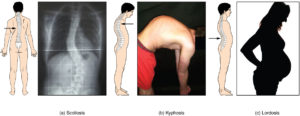
At most, there is a weak correlation. Very Minutely. Think about what you’ve just specifically read- this was a study based on ALL different types of people, from the categories of:
- Exercising. From high performing athletes to the average citizen
- Educational levels. Physical Fitness class, to any subject.
- Smoking. Tobacco, Marijuana.
- Stress. Day to day activities
- Job wellness. A sense of purpose at work.
Striking!
You mean to tell me out of about 500 people there were no clear distinctions? I’m on the same boat today as I was months ago when I found out.
I drew from this when I was told that if it bad posture didn’t likely result in lower back pain then…lower back pain made poor posture stand out. This is more recognizable.
This is not to say that you should walk, stand around, and sit around with a hunch….sort of speak. Rather, so, work on maintaining proper posture at all times.
Does your walking look like this?
You can make a quick change in your stance with these tips from a friend:
And here is a video on how you should properly be sitting:
If you’d like to learn more about a back posture corrector like in the video above, you can click here to see my review.
My friends dad(the chiropractor) went on to tell me that actually a large amount of people change their posture with procedure like injections. It really got me thinking why poor posture is always re-occurring…many of us don’t either have the alignment to do so, or that our habits become a detriment to our posture
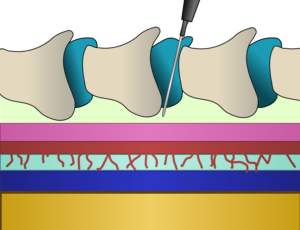
It is a leap to conclude that your poor posture can be corrected, depending on your circumstance, like weight, and hereditary conditions, and it is also another to say that your bad posture will reduce your lower back pain.
You Can’t Worry About Poor Posture
It can be a waste of time to try to figure out why your posture is even bad to begin with, and to try to correct them to prevent any further pain.
Does this mean you shouldn’t worry about your posture when you are taking a seat on the couch, on your chair. Laying in bed, or during exercise? No. Not exactly.
Here is what you can do to understand your posture in any given situation along with and example for each…
1.Work on your overall movement
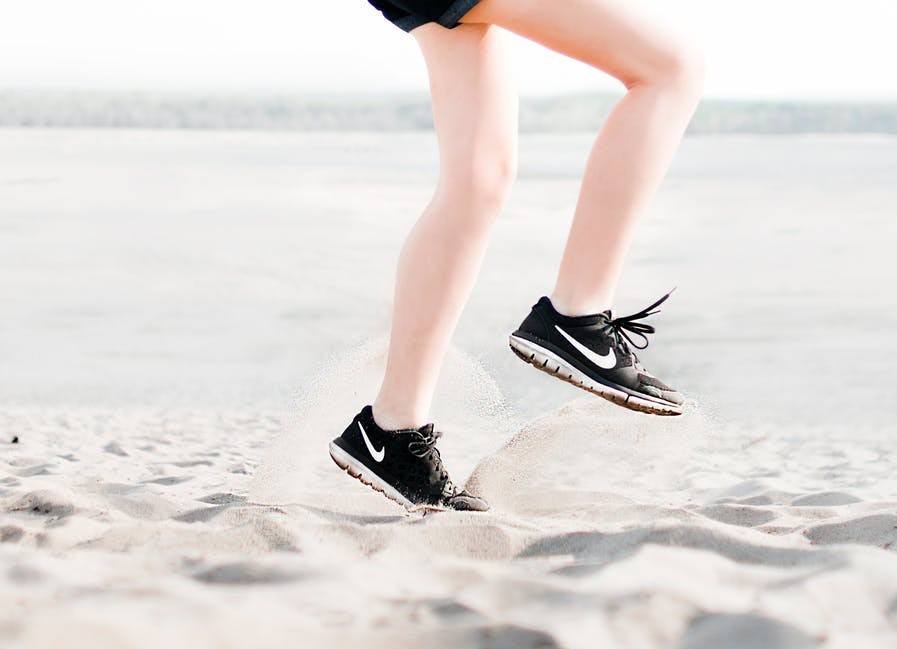
The way in which you move is much more important than how you are standing up or sitting.
Ex: Sitting at your desk or vehicle, having a small amount of your chest slumping is fine, as long as when you go up to extend it for reaching over your head, pressing weight, or rotating make sure you extend your chest.
Having seat support is the most appropriate match. Most chairs whether that be in your office, home or car have a good amount of cushioning, but not all is set up ergonomically friendly; theirs simply not enough padding.
Seat cushions will align your spine, and force you to keep good posture.
After I found out I had a herniated disc appear, I was left with very little room for mistake.
I knew I had to take on two essential approaches to attain better posture:
2. Yoga for my herniated disc.
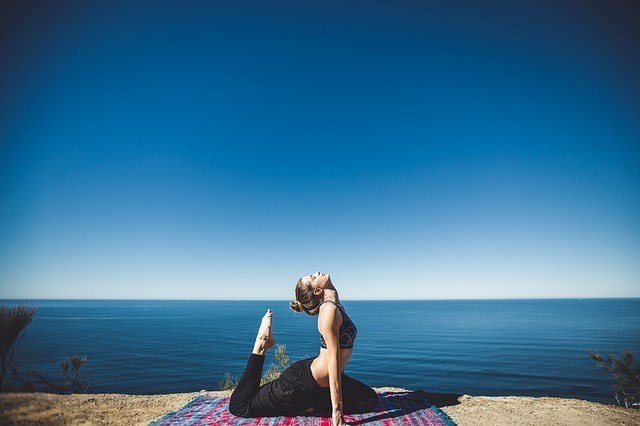
To take the pressure off my disc, and strengthen my muscles around it.
When you hear the word yoga, what comes to your mind? boring, dull, what the heck is that?…at first?
Yoga is on the most extreme opposite end of that spectrum…it’s quite fun and enjoyable. If I would have learned earlier that stretching was the key to improving my posture, I would have hit the healing jackpot. But I had no need for worry in a time of a changed course.
Within weeks of my lower back pain, I made at least 4 visits per week with my physical therapist. In physical therapy I was learning how to utilize better exercises, and stretching techniques to accommodate for my poor balance and posture. In doing so, this is where I first was introduced to the healing powers of yoga.
One way was to stretch, and another was to target stretching with:
- mindfulness
- breathing techniques
- Strength and flexibility
- Movements and mobility
After a brief 15 second couple of stretches I understood the “why” better.
I was targeting pressure relief away from my spine, and its disc, while strengthening and aligning all the other areas of my body in one fluid and single motion.
Whether I was pulling my hips in and out, stretching my lower back, or relieving my tailbone pressure, there was no better mental relief than that.
==>Learn more about Yoga and get started with your stretching plan here<==
3. Practice better sitting habits

My poor posture was the result of many factors:
- my driving job position
- manufacturing
- office position (currently)
- at home
- soccer, and sporting events
- weights in the gym and lifting fat work
Did you know that sitting alone is by far the biggest reason you have terrible posture and muscle imbalances?
Every one of those bullet points listed from up above all has one thing in common…
They are a majority of the result of sitting. What if you could sit down and not have to worry about weakening your muscles? Good posture can affect your:
- Attitude
- Decision Making
- Concentration and Focus
- Stress levels
- And more
Look, if you’re going to spend 8 hours a day(more or less) sitting, you should at least be spending it right.
Whether it’s a day of relaxing, a night out, or your time in at work, you owe it to yourself to take proper measures to sit right.
Let me quickly tell you what happened with me. When I first started with pain it was acute, and to my surprise it became an early on-set of a degenerating disc in my L3-L5, and it didn’t end there…
A herniated disc arose from it in a couple months, and I gained weight because of it. During this onslaught, my hips became pushed forward, and my muscles became stiff as a rock.
I kept my exercise routine, and it was the only thing that helped, but I always had one problem looming…
correcting my posture!
My scoliosis was not helping me either. But I made an adjustment. I started sitting better.
I used a seat cushion to be more productive. To my surprise, I found one that gave me back my posture while sitting and gave me ability to stand up with ease.
==>Learn about managing your pain while at work here<==

4. Change your posture up
Are you sitting or standing in the same stance for a period and causes stress and pain? If so, then its time to throw a change-up.
Sitting change postures more frequently what happens is the stress will shift into supporting different areas of your body rather than in just one location. Keep moving, and taking breaks frequently will help you.
Ex: When I was at my high school sporting events supporting the men’s basketball team, football team, women’s soccer, It required me to stand up in one place for almost an hour. How that looked like: I would shift my weight to one side causing pain to one side. I soon learned to move from one side to the other. What a relief!
3. Have good alignment at the event of higher forces. Sitting with your bottom doing an activity such as lifting a heavy object, your body’s biomechanics are at the upmost importance.



Here is How to lift a Heavy Object with correct posture:
Ex: Performing a squat, what happens to your body? it moves up and down as it should. Your posture alignment matters here as much as your biomechanics. Focus on distributing stress, to reduce an injury.
If you have Lordosis, this short video will show you how to correctly perform a squat with better posture.
Athletes are largely affected too. Working on your movement can lead to not an only better posture but a longer life!
All my athletic performers out there you’ll want to hear this. I want to help you understand what it is to look for in your posture before you do any exercise. First You’ll want to asses your body alignment from top to bottom. You can either find a mirror or get another person to help you do this:
Assessment 1: Your eyes should be level with your shoulders, ears, hips, and knees
Assessment 2: slightly forward at your neck, and lower back. Slightly back with your upper back, and for there to be a normal curve in the spine.
Now for when your body is in movement, otherwise known as dynamic posture- defined as the alignment of your body when its in motion. You should know this when getting into a sport:
Don’t underestimate the power of a neutral stance BEFORE engaging in activity, it’s a begging of all ends…
Your neutral stance – which should be up and straight, will help you for dynamic posture movements when you are playing a sport, and let you bounce back quicker.
How do forces affect your body different in motion then in neutral stance? Diving in a little deeper now.
Have you heard of Kinematic and Kinetics?
it matters to you because…
Kinematics is basically the extension of how you are at an instantaneous rate rotating around your body axis. In according to an athlete like yourself, there are inside and outside forces that are capable of affecting your spine.
Kinetics simply put is the action of your the forces that respond to the amount of motion you make.
At the event of your movements, they can commonly affect your vertebra, and muscles.
The type of injuries that result are:
- acute disk herniation
- fractures
- facet syndrome
- muscular contusion
Unlike exercising, when you stand or sit your joints have already experienced the type of stresses day in and day out, so they adapt “quickly better”.
With exercising, takes on a whole new meaning
Movement is the key:
*Posterior Pelvic Tilt vs Anterior Pelvic Tilt alert:
Is your body facing forward of backward? You could have a Posterior or Anterior Pelvic Tilt that disrupts your posture, because of your pelvis moving, and can make it tough to stand up. Here’s the explanation of the two…
Posterior pelvic tilt:
- there is a reduction in your natural look of the lumbar curve. The”S” shape becomes less curved.
- The back of your pelvis will become dropped down, so the front of your pelvis rises.
The reason you can’t help but sit down is because:
- Your hamstrings are tight
- Lower back muscles are weak
- butt(glutes) are tight
- Lower abdominal muscles are unbalanced
- Quadriceps are weak
- Weak psoas
Anterior pelvic tilt:
- Causes your general lumbar “S” shape to curve in more, looking more exaggerated
You have difficulty to stand because:
- Smaller and tighter quads
- psoas muscles
- erector spinae
One other working on your hips to get them back in alignment(which can be seen in my hip pain article here), another great way to overcome and correct your bodies alignment are with seat cushions, which you will learn more about here in a second. But if would like to check out how to walk and retain better posture before thinking about sitting, you can find that in this article:
==>Go here if you’d Like to see the best ways to stand up and walk with no more pain<==
How To Maintain Your Best Posture, Rewind and Align
You heard of the saying practice makes perfect right?(at least I hope). Have you asked yourself what that means to you yet?
You can’t expect a sudden change the next day in how you sit, stand, or lay down. It took me about 5 times for each one of properly correct. Practice turning off your phone while at your desk, bring your chair closer to the monitor, and lean back. Hold that position for at least 2 minutes.
Your focus plays a big part!
Have you tried to get work done but couldn’t either because you were too tired, or lost the focus to do it? That’s when poor posture makes an entrance.
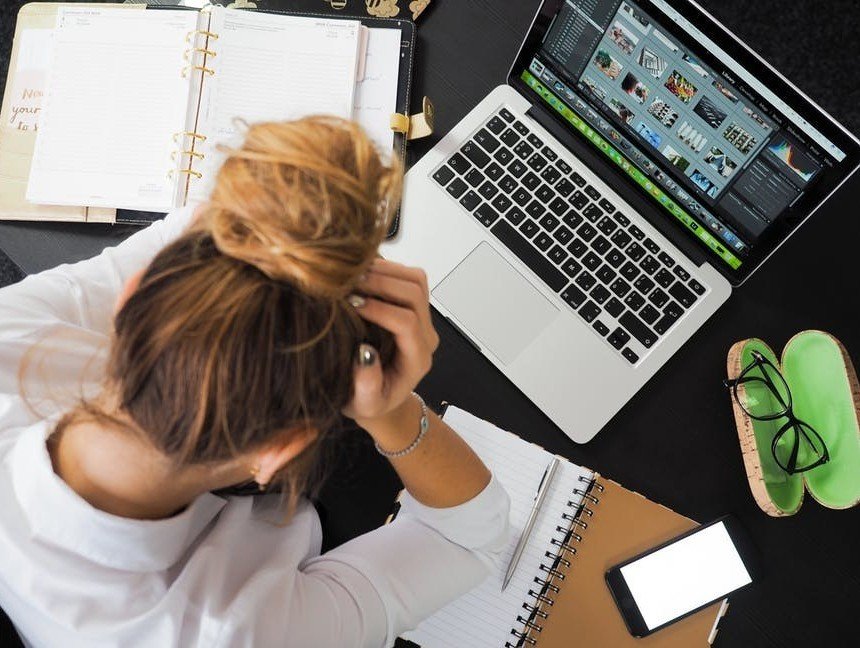
You’re tired, you don’t want to sit up, but you will sit in your chair because you are comfortable.
There are two ways to prevent pain from sneak attacking you.
- Stand up after every 15-30 minutes to stretch, and walk around for at least 5 minutes
- sit for longer with the proper ergonomic set up. Rather than a chair, a back cushion will help you complete your task with no pain. It causes your spine to stay erect.
I recommend doing both to give your muscles a little movement, but you can take approach two without any issues.
==>Go here to learn more about proper sitting mechanisms, and back seat cushions<==
At this point stand up, and take a break. Apply frequent breaks to stand up if it continues.
Holding your posture while sitting can be irritating because you either hunch or feel like slouching down. How I learned to beat that was with better seat cushioning that would keep my spine straight, while holding my pelvis in a straight alignment.
What I like to use are seat cushions. They are versatile, and while I have to:
I always know my back will be taken care of. Will they solve the root of the cause? Likely not, but what they do very well is they stabilize your spine so it doesn’t take any pressure at all. If you have a herniated disc, degenerative disc, sciatica, or any other form of a curved back and mechanical issue, the right seat cushion will hold it down.
In my years of experience from traveling to working, and in my leisure time, its crucial to have both specific and non-specific lower back pain support. My health and wellness is extremely important to me, and if I can get my hands on something that will help me in the process to get rid of my lower back pain, I will go for it.
To make sure my muscles don’t get weaker in between the days I work out, and the days I have off, I go to my seat cushion to keep me in balance and harmony.
There are two seat cushions I’m extremely in love with. Well maybe not love, but you can guess how excited I am to have them.
Here’s one I use for my lumbar:

This is great for keeping my posture straight in which ever scenario I find I’m in. I could be sitting in a vehicle, sitting on my couch or recliner, or at work piecing away task after task for hours!
==>Go here if you’d like to learn more about the #1 lumbar cushion<==
Find Your Next Available Seat:
My next incident with poor posture came from a bruised coccyx, and sciatic nerve damage(which leads to sciatica). The seat cushioning in my first and second living room offered me very little help. I couldn’t stand up because of 1. My lower back and the disc problems I was having and 2. A bruised coccyx…
And if you’ve had a bruised coccyx, oh boy, that’s a problem you wouldn’t like to deal with. Anywho, my close colleague asked me if I had tried seat cushions before. I quickly responded with a no. I was advised that they were great for alleviating my lower back pain, and helping the spine re-align itself.
It didn’t put much thought into it. It was a day later that I did my research and found a couple seat cushions. I trialed out a few for weeks, until I landed on one I really loved. You could say it was meant to be.
After the first use, I immediately felt and received:
- pressure point relief
- buttock support
- hip relief(SI joint)
- Pelvic support
- muscle relief
- nerve release
- tailbone relief
- improved posture
- improved spine
Just to name a few.
Here’s my seat support cushion:
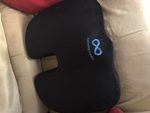
Check out my video:
Moments with lower back pain don’t have to be strenuous or a let down. Seat cushions maximize my stability so that when I go to exercise, I’m no questions asked ready to perform.
The last thing you want is for your muscles to weaken, and your joints to join in the avalanche. When I do my sitting, I make sure to use correct seating posture so I don’t have to experience mechanical and inflammation pain again.
Lifting weights:
If you’ve lifted weights that were less heavy, and easy to do, it will not require all of your attention and focus.You’ll likely underestimate your movement, causing there to be a mistake. In result, you develop a bad stance, a posture deficiency.
Focus on one motion at a time, and move slowly. Lift up gently, and go up your knees. Move on to bigger weights if need be.
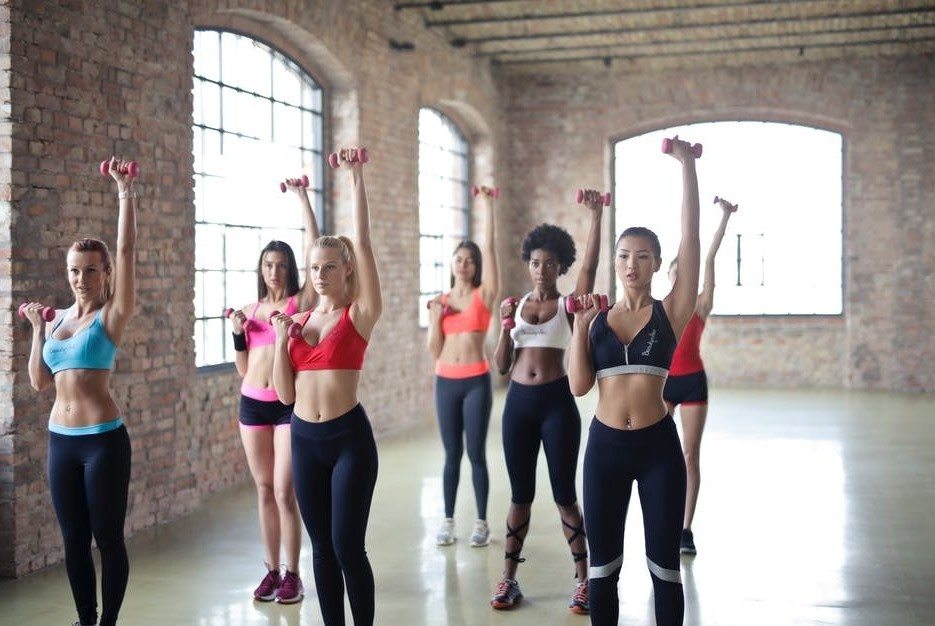
Walk with your head up:
Your lower back pain because at your head. Keep your head up, neck up, straight parallel with your shoulders.You shouldn’t have your hands in your pockets, this will increase the lack of posture. Move with your legs extended to lessen the impact to your hips and pelvis.

Make Moves, Movement Through Posture
By now I hope you are ready to take away that neither poor posture is magnified as a result of lower back pain, nor is back pain a result of poor posture. One statement does not triumph over the other. Work to improve your overall movements instead.
Once you can get all your movements to work with one another, you can build on better habits. You’ll see a huge difference in the way you sit, stand, and walk around.
Be careful how you use your back. Slouching is your postures largest enemy. They do not work hand in hand. Wear and tear of your muscles will begin to happen over time, so be conscious of that the next time you go to sit on a chair, lift a heavy object, or in general, when you are standing.
Understand bad standing positions, and work to correct them right away. You want to add more shelf life to your disk, muscles, and the fluids that support your back.
Time doesn’t wait for you, and so shouldn’t you? If poor posture didn’t result from the first time you slouched on your chair, you can bet it will lead to repetition, and repetition creates poor posture. Notice the signs, and take immediate action to prevent it from happening again…
Stand up, and regain your focus, and get back to your task.
3 Long-Lasting Tips For Greater Posture
You’ve seen how important having good posture is along with all the different scenarios you can find yourself in, now it’s about to get even more serious.
Let me share with you how to eliminate your back pain and inflammation so you’re no longer subconsciously thinking about it anymore.
TIP #1: Set Up An Ergonomic Environment
Most of us don’t think about how our environment affects our productivity and also the way we shape our backs. Before you step into an environment, ask yourself the question: “Is it ergonomic friendly?”
It’s not enough to settle for less because that will backfire on you…really fast! Here’s what to do:
- Find a comfortable surface to sit on and stand on. It’s important how you sit as much as how you stand. If your feet are on a lopsided shaped surface and let’s say you go to sit, your body will be off-balance, thus your back will be open to getting inflamed much faster.
- Get rid of old. I know that you might have an attachment to that old chair, the desktop, your shoes, etc, but it’s likely that they could be worn out and it’s time to get with the new. It’s worth investing time into a new design and new tools so that you can long-term have the correct posture which means you will feel happier and less stressed to get on with your day and life.
These are just a couple of the many tips to use, and you can visit the full article on how to set up an ergonomic friendly environment at work or in the workplace here.
TIP #2: Be Ready!
That sounds self-explanatory, right? The words are, but making it happen isn’t so. You see, you’ll likely digest the knowledge you learned here today and not do anything with it. Or you will but only for a short time. So what does that tell you?
You need to prepare mentally yes, but more so be knowledgable about what your options are before you get into your next inflammation and pain. There are many ways to go about it, like:
- Before you walk into a situation, ask yourself: “how am I feeling?” Doing this will determine your mood and thus affect the way you will behave in the situation. You want to predict how you may act so you can understand what you will expose your back too.
- Know your treatment options. If it’s chronic back pain, I created an over 10,000-word post on your chronic lower back pain treatment options, make sure to check that out if you might have chronic pain or are already in it. See it here.
Other than that, you can take prevention steps to ensure you will not suffer another ache and cause your posture to suffer. If you want to visit our prevention steps article, you can do so by going to our how to prevent a back pain article.
TIP #3: Strengthen Your Muscle Imbalances
I’ve shared with you earlier how weaker muscles on one side of your body(or both) are the contributing factors for your poor posture, and that you should do your best to keep them in balance. But how do you do it?
For one, you can get in the gym and use weights to strengthen the weaker side of your body, but what if you can’t jump into workout mode right now?
Start doing little things like walking which will strengthen your leg muscles/joints and will force you to keep your back upright…
And ultimately inflammation will come about less. To add on, I made a free article for you that goes over TONS of other things you should be doing to keep your muscle balances in check and my #1 solution to fix them, and you can check them out here.
Just remember this, The #1 reason why your posture is getting worse and doing an exercise won’t fix it is because you’re not improving your muscle imbalances! Focus on strengthening your weak side muscles and you will feel WAY better, happier and look and feel healthier!
Related post: My Back Pain Coach
A good stance and posture reflect a proper state of mind.
~Morihei Ueshiba
In the next sections, you’ll be able to apply your posture in different scenarios. This will be the defining test in how your posture really affects your life.
You have two routes to choose from. One will take you into “How to Work”, while the other into “How to walk”.
Choosing how to walk first would be great for those of us in really bad posture that can’t bear to do any exercise or walking. This will show you what to do.
In my how to work page, you might already have the basics down of walking, so you can get right into.
The Remove Back Pain System
We’ve learned how to hold your posture together through many different factors such as, work, walking, etc. And now it’s time that we put even better posture to use with the ways in which exercise will work to help make it better. Everything starts with the way you stand, and walking will help you with that.
Continue with walking right and continued posture tips here.
Recommended posts:

This was a great post! And if course eye opening. I’ve been told for years to walk or sit up straight with my shoulders back. Not that it’s a bad idea but that it has no bearing on back pain. I think bad posture comes from things like holding babies, carrying bags on our back, etc. My back pain that I’ve experienced recently is coming from carrying my laptop everyday to and from work. I carry it on my shoulder. I appreciate the wealth of information you’ve provided. Awesome job! Best wishes
Hi Davona,
This was eye opening to me the first time I ever found out about it too.my shoulders were always back, and although I didn’t feel it at first, I did about a week later. You are right, it does. Holding anything that you mentioned will do it. The larger the weight the worse it is. A laptop will carry your weight to one side, and a shift in weight will do it. You are welcome!